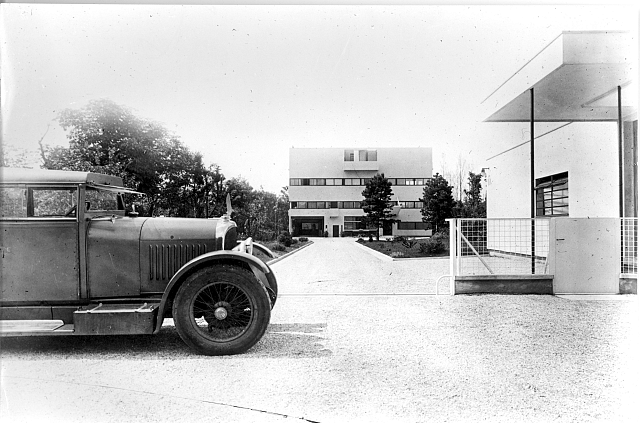Charles-Edouard Jeanneret-Gris, better known by the pseudonym Le Corbusier (1887-1965), is considered the most significant architect of the modern age. Amongst the most influential characters of the history of contemporary architecture and of the 20th century culture, he is remembered as the master of the Modern Movement. A pioneer in the use of reinforced concrete in architecture, he has also been one of the fathers of contemporary town planning.
His works still have a considerable influence on architecture and design today. He designed many buildings and drew up numerous urban development plans throughout the world and today the majority of his architecture has been recognised by UNESCO as World Heritage.







Le Corbusier was an all-round artist, producing a large number of artworks such as paintings, sculptures, drawings and collages, enamels, tapestries, engraving and furniture; all with the same unmistakable design which have become real icons.
The colour schemes of his buildings and design objects were just as important to Le Corbusier as the ground plan and shape. Fascinated by the balanced colours he found in nature, Le Corbusier based his “Architectural Polychromy” on a structural and artistic choice of pigments.
Le Corbusier believed the key aspect in design was the harmony of colours and the effect colour had on man and space. This explains why his “Architectural Polychromy” is still an important source of inspiration when designing spaces and buildings even today. At the same time, this unique colour system is a guarantee for any project with regards to colour and architecture. The “Architectural Polychromy” consists of 63 fascinating shades, divided into two colour collections, one created in 1931 with 43 subdued shades and the other in 1959 with 20 bolder tones. The colours are very natural and can be combined with each other, becoming a highly respected tool for designers and architects.
Taking inspiration from the many buildings designed by Le Corbusier and his use of exposed concrete, the porcelain collection includes two neutral porcelain surfaces which can be perfectly combined with the 12 colours of the “Polychromie Architecturale”.
Explore the remarkable range here.